Pashmina shawls are considered one of the best and warmest wrap accessories all over the world. These monarchically graceful beauties have a history of being cherished by royals all over the world. From locally reigning Mughal rulers to European and Asian kings and queens, Pashmina has had the privilege to reach every nook and corner around the globe, and fascinate avid admirers of handmade art and craft. But what is a Pashmina shawl? In fact, what is Pashmina? Let us find out and debunk the conundrum surrounding it.
What is Pashmina?
Pashmina is the art of producing fine fabric from raw Cashmere wool. In fact, it is raw Cashmere which is processed, spun, woven, and formed into Pashmina shawls, stoles, or scarves. Hence Pashmina shawls are those shawls that have been prepared handweaving fine Cashmere.
Origin
Cashmere fleece is found in Ladakh, where the Changthangi goat resides. The area has harsh climatic conditions and the temperature in winter dips as low as -40 degrees. To protect the Changthangi goat from such conditions, nature has bestowed the Cashmere wool which grows on its underbelly and neck and keeps it warm in the harshest of weathers.
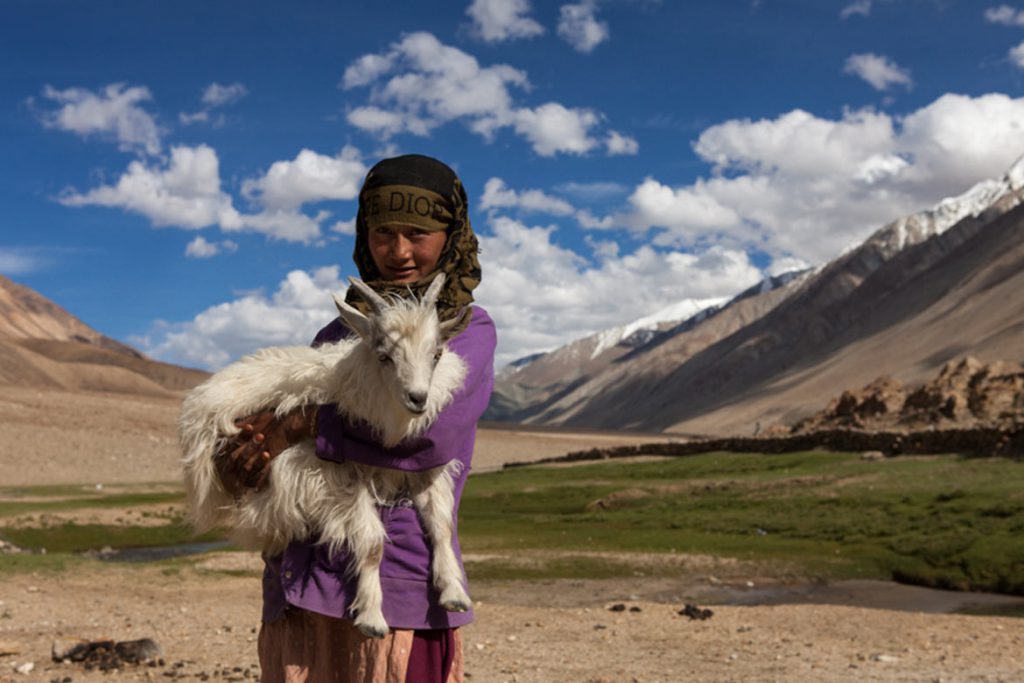
However, as soon as summer arrives, the goat becomes uncomfortable as the wool is exceptionally warm. The goat rubs itself against rough surfaces like shrubs, rocks, and walls to get rid of this wool. Then, herders professionally collect this wool by combing it off the body of these goats. This raw wool is Cashmere (locally called Pashm). It is later collected and sent to Kashmir, where the rest of the processing takes place. The goat is now free and at ease, and starts running around again.
Processing
As soon as the raw wool arrives in Kashmir, it is handed over to womenfolk who sit in groups and start with the cleaning of raw fibre. Raw fibre is full of dirt, dust, and foreign material which gets attached to the animal as it moves around. This wool is cleaned and sorted and prepared for spinning. Pre preparation includes placing the fibre ina container filled with powdered rice which makes it even, smoother, and a bit strong so as not to break easily.
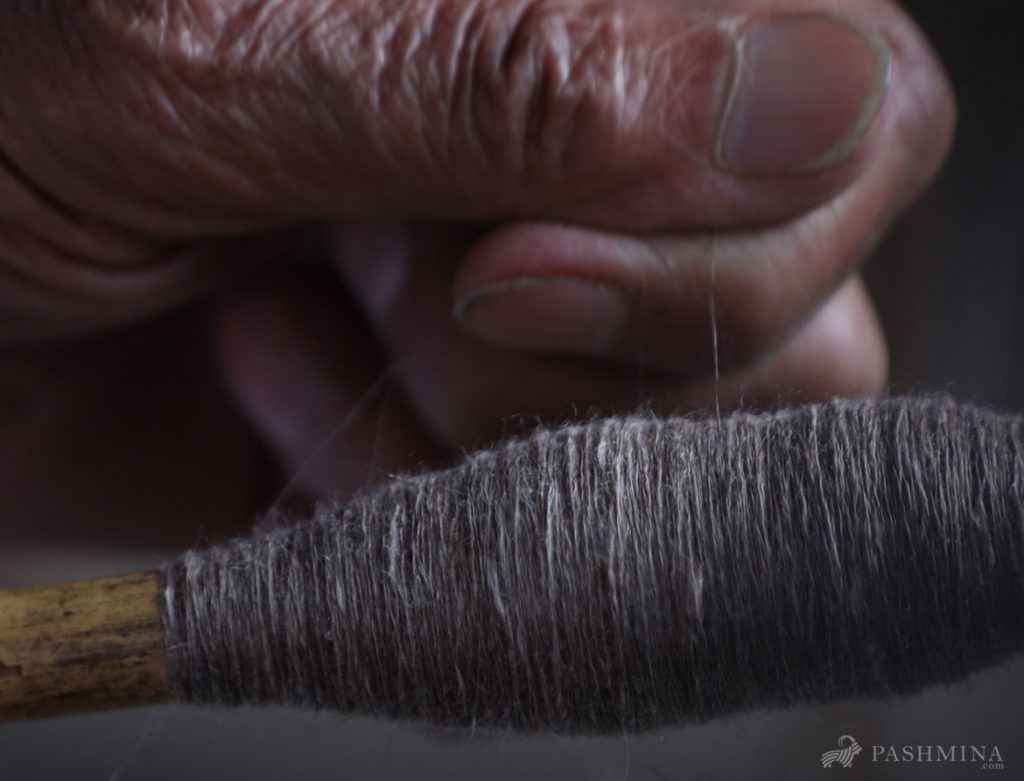
Next, womenfolk from all parts of the valley come together and begin the process of spinning. This is done by fitting the raw wool in a wooden spinning wheel locally known as "Yinder". Spinning the wool transforms the raw wool lump into long threads or yarn. The yarn is so fine; its diameter is 12-16 microns only. Cashmere yarn is sometimes not visible to the naked eye at the first look. It is merely the skill of these women, who process it and convert a delicate lump to even more delicate threads
Weaving Fine Cashmere
Now, the yarn is then handed over to weavers. Weavers are usually men, who sit two at a time on a wooden handloom which is native to Kashmir. Then, men mount the fine yarn on the handloom and begin weaving into fabric. This fabric can be made into a shawl, wrap, scarf, or handkerchief even. This is how Pashmina shawls are made.
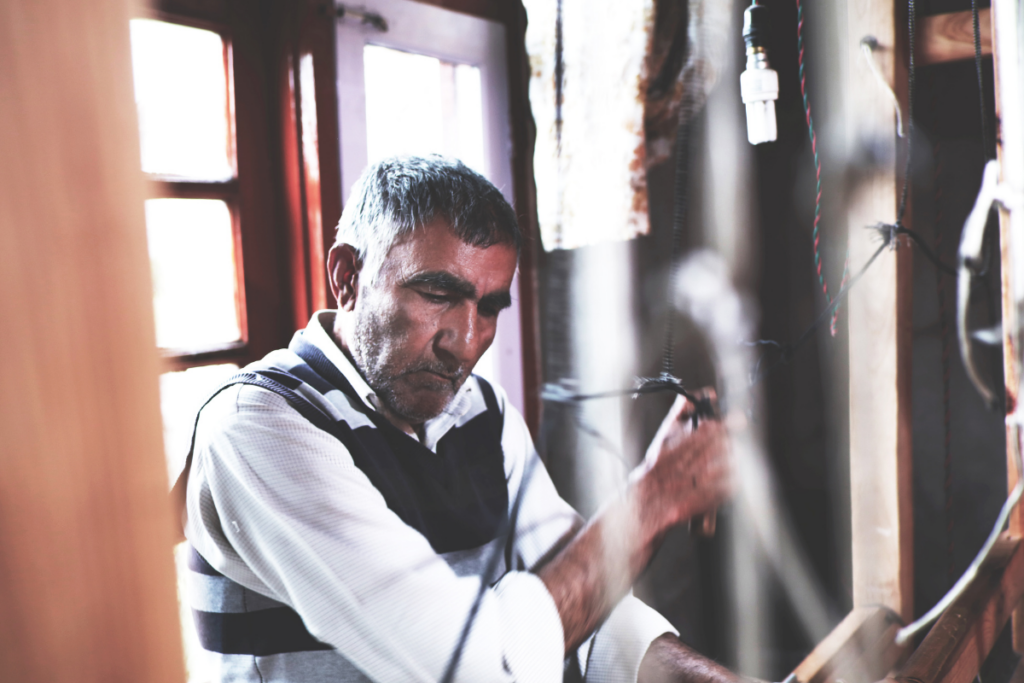
Later shawls can be even embroidered based on the choice made by customers. The embroidery done on Pashmina shawls has to be done by hand. This is because the underlying fabric is so delicate and gentle that if embroidery is done by machine, it might be abrasive for the shawl.
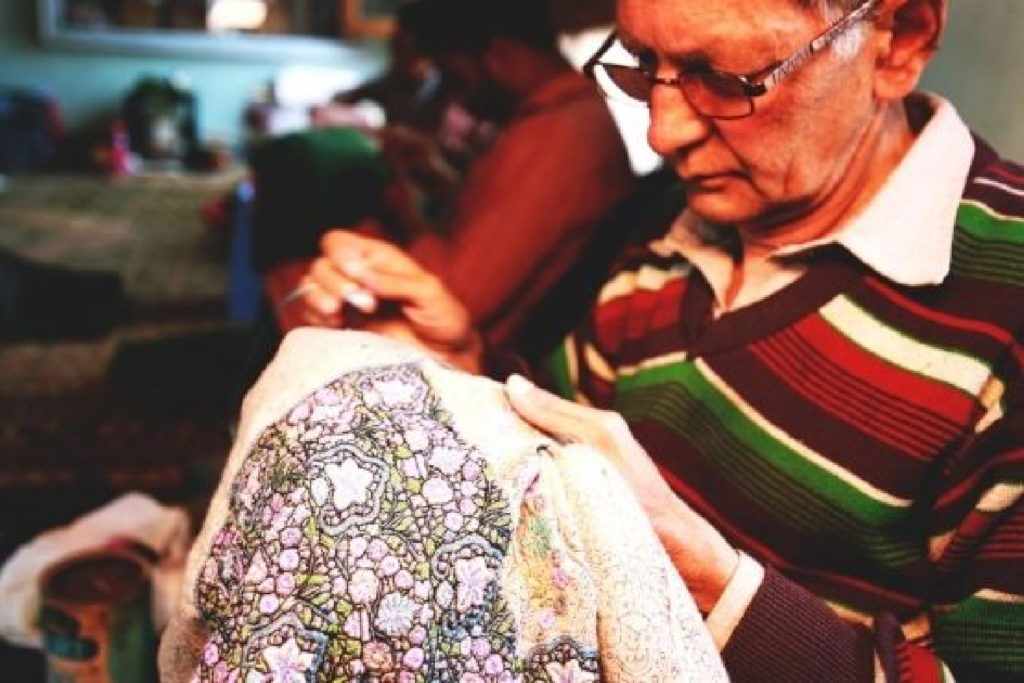
History
Pashmina hasn't been loved and cherished by our parents or grandparents. Rather, Pashmina is the art that has been most sought after since the 16th century. It all started when a Sufi saint Syed Ali Hamdani came for a visit to Kashmir valley and discovered Pashmina. He ordered Pashmina socks be made for the then king, who was highly impressed, and ordered several units to be set up at homes of artisans.
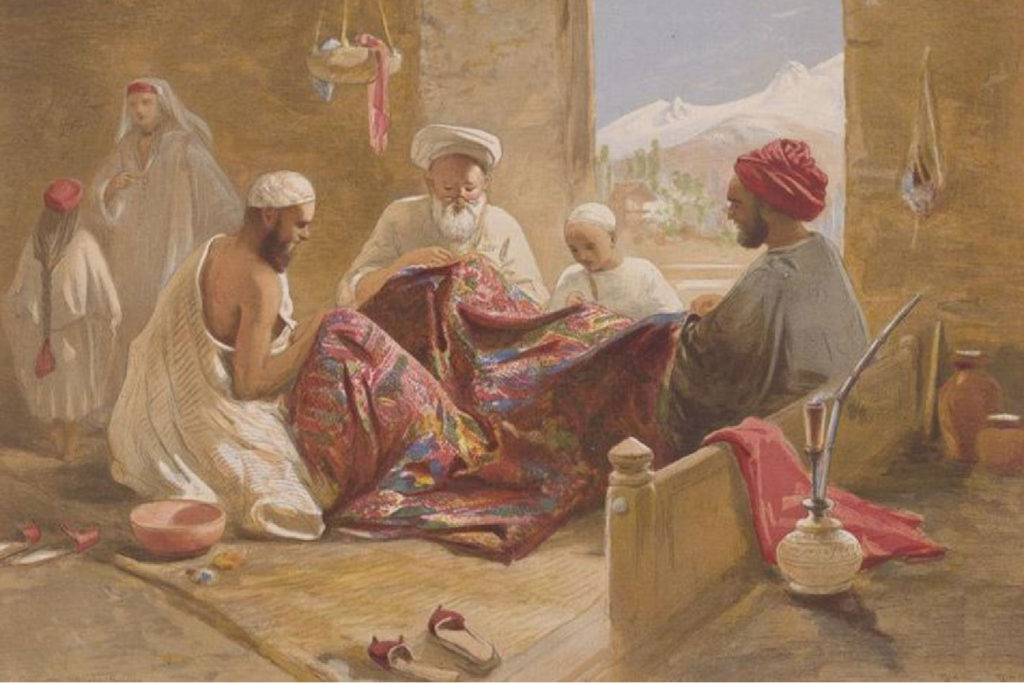
Be it the Mughal rulers of India, the Kashmiri King Zain Ul Abideen, Empress Josephine, Napoleon, Kings, and queens of Persia, and many more royal rulers of the largest dynasties, Pashmina is such an art that had everyone swooned. Kings of Persia used to give Pashmina shawl to rulers of other countries as 'khilat'. This custom influenced others and later, nobles made it a habit to gift Pashmina shawls to each other, thereby improving relations with neighbouring countries and guests.
Also read: 500 Years of Timeless Pashmina
Pashmina today
Pashmina has recently started to gain impetus in modern times with contemporary patterns introducing themselves into this ancient art. Now Pashminas aren't only embroidered but printed, patterned in stripes and checks, laced and adorned with styles which are relevant today.
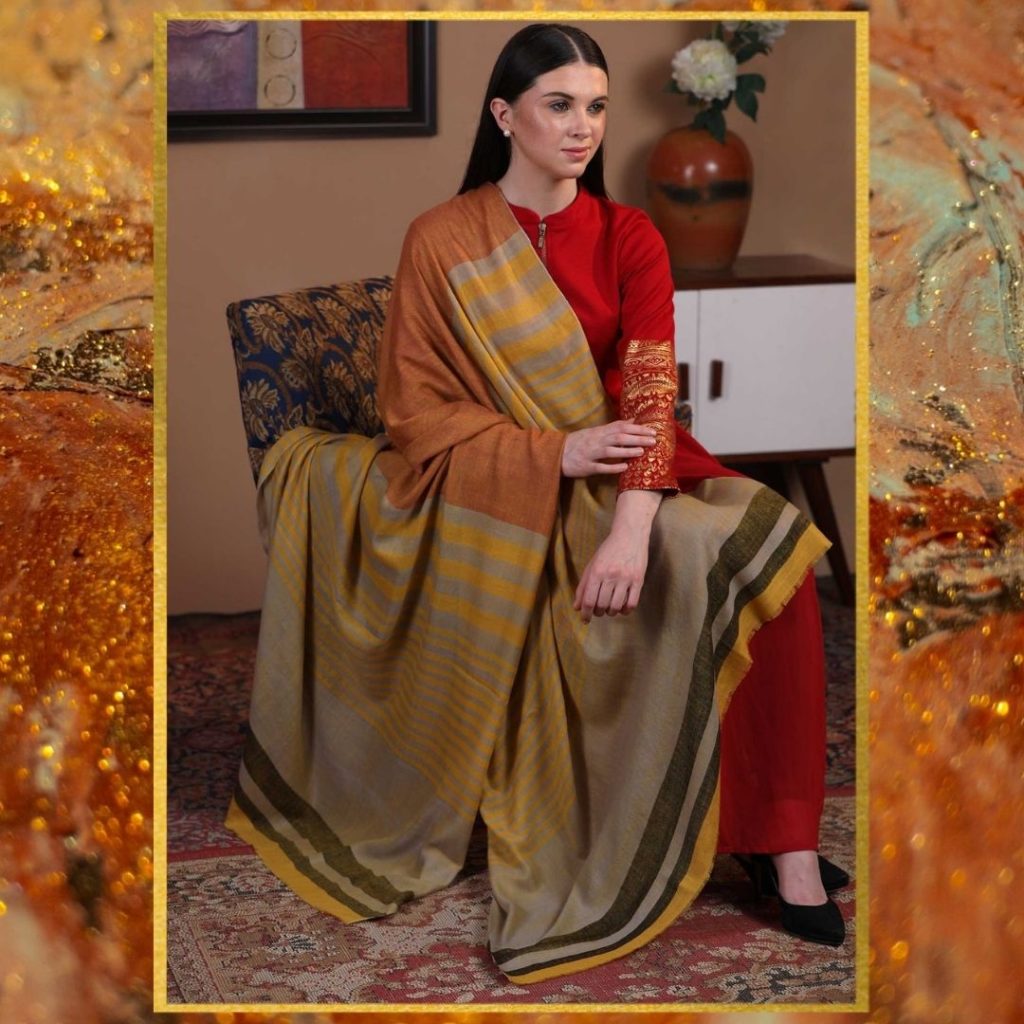
Hence Pashmina has become the first choice of young women and even teen girls today, contrary to the idea that Pashmina is primitive. It is a timeless accessory that shows us how beautiful and elegant our culture has been. Now women and even girls have apprehended the versatility of Pashmina, and the way that it can be worn on almost all occasions
Fake Pashminas
One of the main issues with Pashmina remains that of purity. As several traders and manufacturers introduced machines in the trade, pure pashmina makers suffered huge losses, and craft nearly reached its decay. Pashmina is an investment of a lifetime. Therefore much care should be taken while buying a Pashmina shawl.
A pure Pashmina will either have a GI stamp on one of its corners or a pure Pashmina seller will be able to produce a certificate of purity from the Crafts Development Institute (CDI) of Kashmir. If that doesn't happen, the shawl might not be made from pure Cashmere
There are a number of tests that can be done at home for the shawl that you already have in possession. Everyone who owns a piece should do those tests and check if their Pashmina is pure or fake.